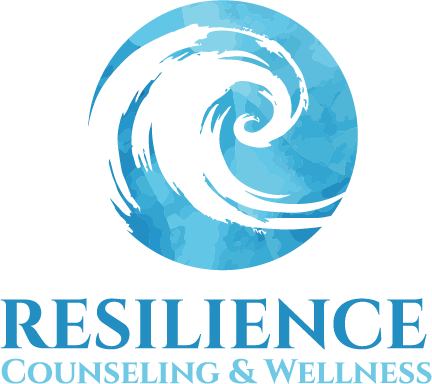
Takeaway: Somatic memory refers to how our bodies hold on to past experiences, even when we can’t recall them consciously. This guide, written by a therapist, can help you understand how somatic memory shows up for you in relation to traumatic experiences and what you can do to start healing.
In this post, we’ll demystify somatic memory, a concept that often shows up in therapy but remains elusive to many. When clients say, “I don’t remember what happened, but my body reacts like I do,” they’re describing somatic memory in real time. This guide is designed to help you recognize how your body might be holding onto past traumatic experiences, even when those memories aren’t accessible through conscious thought, and what healing can look like through somatic therapy and other therapeutic modalities.
Let’s start by defining what somatic memory actually is.
What Is Somatic Memory?
Somatic memory refers to the way our bodies store and respond to past experiences, especially traumatic events, even when we can’t consciously recall them. It’s a form of implicit memory encoded in the nervous system, showing up as physical sensations, emotional reactions, or bodily responses that seem disconnected from explicit memory.
Unlike declarative memory, which allows us to recall facts and events, somatic memory operates beneath conscious awareness. It’s why someone might feel muscle tension, nausea, or emotional flashbacks during stressful events without understanding why. These physical manifestations are often linked to trauma-related disorders like posttraumatic stress disorder (PTSD), where the body holds onto painful experiences long after the original trauma has passed.
Understanding somatic memory helps bridge the gap between mind and body, offering insight into how physical symptoms, such as chronic pain, somatic flashbacks, or other physical effects of trauma, can be rooted in stored memories rather than medical conditions alone.
Quick Overview of Somatic Memory vs. Cognitive Memory Processes
To better understand how somatic memory differs from cognitive memory, let’s look at a side-by-side comparison. These two types of human memory operate in distinct ways, but both influence how we respond to everyday life.
| Aspect | Somatic Memory | Cognitive Memory |
|---|---|---|
| Brief Definition | Body-based memory stored in the nervous system and sensory responses | Mind-based memory involving conscious recall of facts, events, and information |
| Type of Memory | Implicit memory, nonverbal, often trauma-related | Explicit memory, verbal, and narrative |
| Common Triggers | Sensory cues (smells, sounds, touch), relational dynamics, bodily sensations | Specific questions, reminders, or intentional recall |
| How it Feels | Physical symptoms like muscle tension, nausea, emotional flashbacks, dissociation | Mental recollection, storytelling, or reflection |
| Typical Healing Approaches | Somatic therapy, somatic experiencing, breathwork, trauma-informed yoga | Talk therapy, journaling, cognitive behavioral therapy (CBT) |
While cognitive memory helps us make sense of past events, somatic memory often holds the emotional truth of past trauma. Healing requires integrating both, honoring the body’s protective mechanisms while gently expanding conscious awareness.
4 Examples of Somatic Memory in Daily Life
Somatic memory can show up in subtle, surprising ways. Below are several real-world examples that illustrate how the body holds onto past traumatic experiences, and how you can begin to respond with care and curiosity.
1. Flinching at Sudden Loud Noises
- Example scenario: You’re in a meeting and someone drops a book. You flinch, heart racing, possibly feeling physical pain in your chest, even though you know you’re safe.
- Why it happens: Your nervous system may associate loud sounds with past trauma, such as childhood trauma or other stressful events.
- What to do about it: Pause and orient yourself. Take slow breaths, and reconnect with the present moment.
- Therapist tip: These reactions are part of your body’s stress response. Somatic therapy can help recalibrate your system and naturally recover from trauma-related disorders.
2. Feeling Nauseous During Conflict
- Example scenario: You’re having a difficult conversation and suddenly feel nauseous or dizzy.
- Why it happens: Somatic symptoms like nausea may stem from traumatic body memories linked to emotional experiences of abandonment or harm.
- What to do about it: Ground yourself with physical cues. Press your feet into the floor, hold a comforting object, or sip water.
- Therapist tip: Your body is responding to negative emotional associations. Somatic experiencing and emotional regulation techniques can help reduce these physical effects.
3. Avoiding Certain Places Without Knowing Why
- Example scenario: You feel uneasy walking past a building, even though nothing seems wrong.
- Why it happens: Somatic memory may be recalling painful experiences or intrusive memories tied to that location.
- What to do about it: Notice the discomfort without judgment. You don’t need to force yourself to stay. Explore the feeling later in a safe space.
- Therapist tip: Bodily reactions often precede conscious thought. Therapy can help you decode these stored memories and restore physical well-being.
4. Feeling Overwhelmed by Certain Smells or Textures
- Example scenario: A specific perfume or fabric makes you feel anxious or irritable.
- Why it happens: Sensory cues can trigger somatic sensations tied to past traumatic events.
- What to do about it: Shift your environment if needed. Reflect on the experience with curiosity.
- Therapist tip: These physical sensations felt in response to sensory input are part of how the body holds trauma. Therapy can help you process these reactions and reduce their intensity.
When to Consider Therapy for Somatic Memory Trauma
If somatic memory is interfering with your daily life, relationships, or mental health, therapy may offer a supportive path forward. Consider seeking help if you experience:
- Chronic pain or physical symptoms without a clear medical cause
- Emotional flashbacks or intense emotions during everyday interactions
- Somatic symptoms like dissociation, nausea, or muscle tension
- Avoidance of places, people, or situations without knowing why
- Difficulty feeling safe in your body or trusting your emotional response
- Intrusive memories or physical manifestations of past trauma
- Mental health problems that persist despite cognitive behavioral therapy
Therapy can help you gently unpack these physical reactions and experiences, reconnect with your body, and build a sense of safety that’s rooted in the present, not the past. Therapeutic approaches like somatic experiencing and EMDR can help you reconnect with your body and begin healing from trauma-related disorders.
Final Thoughts
Somatic memory reminds us that trauma isn’t just an event, it’s a full body experience. In this post, we explored the somatic memory definition and its relationship with traumatic memory. , how it differs from cognitive memory, and how it can manifest in everyday life through physical sensations, emotional reactions, and bodily responses.
At Resilience Counseling & Wellness, we specialize in trauma-informed care that honors the full spectrum of human memory, both implicit and explicit. Whether you’re navigating post traumatic stress disorder (PTSD), childhood trauma, or simply trying to understand your body memories, our team is here to support you with warmth, clarity, and evidence-based therapeutic modalities.
If you’re ready to explore somatic healing or want to learn more about our approach, we’d love to connect. You deserve care that sees the whole you, and we’re here to offer it.

